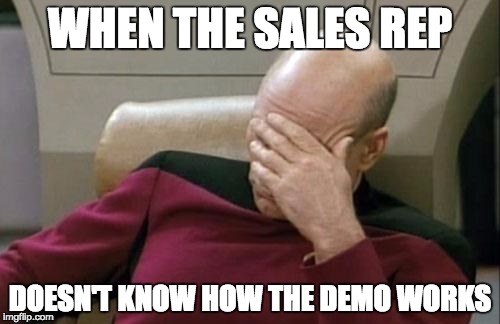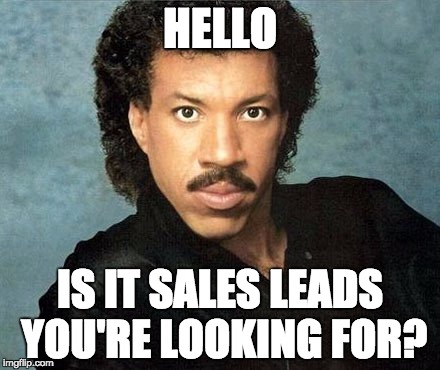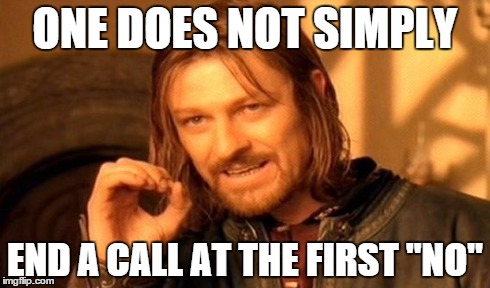
We’ve all been there – stuck in an online or in-person meeting that was scheduled to last 30 minutes, but it drags on for nearly two hours and feels like nothing was accomplished.
Meetings (at least good ones) are meant to align organizations, plan strategy, and move business forward.
Leading research shows that unnecessary meetings cost US businesses up to $37 billion annually. Employees report they spend over 30 hours per month in unproductive meetings, with many of those hours on web conferences and conference calls. Additionally, 45 percent feel overwhelmed by the number of meetings they attend, 91 percent report daydreaming during meetings, and 73 percent multitask – which may actually be a more valuable use of their time.
Eliminating meetings all-together is not a viable, nor necessary outcome. Instead, the goal should be to make meetings as productive as possible.
Salespeople need to be particularly adept scheduling, holding, and following up after meetings because it has a direct impact on their performance. Building on best practices, here are four ways to make meetings worth more, not cost more.
First impressions count

Every interaction is an opportunity to push discussions and relationships forward – you can lose your audience or customer at any point. In its guide on “How To Win Micro-Moments,” Google talks about how the fractured consumer journey is now hundreds of real-time, intent-driven micro-moments.
Each is a critical opportunity for brands to shape our decisions and preferences.
To get the most out of your meetings, think about how you can address immediate needs. Create dynamic presentations that incorporate rich media, like video and web slides, and look for ways to engage people at every moment. One example is leveraging polling features to capture real-time input and gauge interest.
Use modern tools

We’ve all been there – meeting attendees quickly lose interest if they spend the first 10 minutes of a meeting fumbling around to download special software or need complicated login instructions. And presenters lose credibility when they can’t get everyone on the same page quickly – struggling to find the right file to present and can’t figure out how to give the demo.
Research from CSO Insights shows that over 60 percent of sales leaders say the lack of proper tools lengthens sales cycles, and nearly two-thirds of salespeople don’t effectively leverage content during web-based meetings. These challenges require organizations to invest in – or move dollars to – more modern, cloud-based solutions over traditional web conferencing tools.
Look for solutions that can instantaneously launch web-based meetings right from email (like Outlook and Gmail), CRM records, or mobile devices. Once in the meeting, presenters should have access to their entire content library, screen sharing capabilities, and rich media to move conversations forward. Participants should be able to join meetings by simply going to a customized URL link.
To further increase sales teams more productive, make sure your meeting solution automatically logs all engagement activity for each meeting back to a CRM system like Salesforce or Microsoft Dynamics.
When all meeting information is captured (including a recording of the call, where appropriate), sales leaders have insights to make smarter decisions and know where to best prioritize their time – this leads to better business outcomes and more accurate forecasts.
Personalize the pitch

The most effective representatives adapt to whatever situation they find themselves in to ensure meetings are successful. Research from the Aberdeen Group shows that top performing salespeople are better at personalizing presentations and, increasingly, videos than their peers – ultimately leading to higher lead conversion and win rates.
Personalization requires having all relevant content accessible at your fingertips, so if a question arises that wasn’t on your initial agenda, you don’t find yourself at a loss and schedule yet another costly meeting. But most people in sales report they can’t find the content they need or just build it own their own, and only 35 percent say they have full access to content on mobile devices according to CSO Insights – which is problematic given the 24/7 nature of selling.
Market leading organizations are solving this personalization challenge by investing in broader sales engagement platforms versus single-point tools. These platforms enable both inside and field sales teams access to the same library of marketing approved content, which can then be tailored to meet the needs of customers and prospects. Best of all, content used across emails, online meetings and web conferences, and in-person, can be tracked for level of engagement.
In many cases, organizations using sales engagement platforms are better able to balance the increasing need for personalization with the need to be more prescriptive in how teams sell to ensure consistent messaging. And marketing now has fact-based insight on what’s working and what’s not to improve content effectiveness.
Follow-up smarter

Too much of the follow up is left to individual discretion and isn’t based on actual data.
It’s critical to have a solution that automatically captures engagement analytics from each meeting. As followups are done, they’ll have a record of all the content that was covered, know how much time was spent on each topic, and overall were people engaged or distracted. This way, the follow up can be more personal and better customized to what customer expect.
Innovative companies are also leveraging sales engagement technology to guide reps and recommend next steps.
When an online or in-person meeting ends salespeople may be required to capture meeting details directly into their CRM system. Or, they receive system-generated recommended actions, such as sending a link content from the meeting or content that maps to a particular sales stage. When content is sent out as a link, the salesperson is immediately notified when someone opens or forwards the material. This level of insight can be the difference between a run-of-the-mill meeting and one that drives revenue.
In summary, well-executed meetings – supported by modern approaches and solutions – can function as engines of productivity and growth in a business. Follow the four guidelines above and your costly meetings will deliver higher value.
Get the TNW newsletter
Get the most important tech news in your inbox each week.





